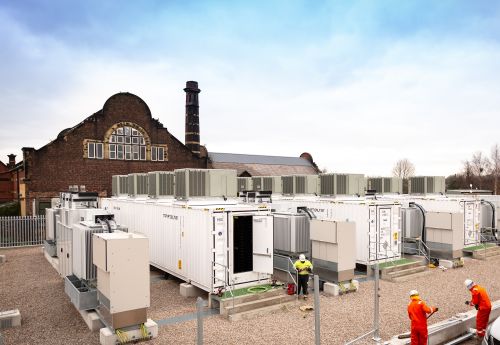NEC Pulls the Plug on Storage Integration Business
NEC Pulls the Plug on Storage Integration Business

Grid battery integrator NEC Energy Solutions is winding down, Bloomberg reported Thursday.
The company manufactured and integrated hundreds of megawatts of battery systems for projects around the world. But parent company NEC Corp. of Japan told Bloomberg that the subsidiary lost money since its founding in 2014, when NEC paid $100 million for the grid storage arm of bankrupt A123.
The full wind-down will take a decade: NEC ES will wrap up projects already in progress, and fulfill operations and maintenance obligations through March 2030, according to the report. NEC ES did not respond to Greentech Media’s requests for comment.
NEC, a communications and technology giant, blamed energy storage market conditions and the coronavirus pandemic for interrupting efforts to sell the subsidiary. That claim would make this the first major energy storage business casualty of the coronavirus crisis, which has not inflicted much visible harm on storage companies compared to other members of the energy sector.
Grid battery projects have multi-year development cycles, so a temporary slowdown in construction or business development is unlikely to a kill a project. Major projects moving forward with utility contracts also qualify as critical infrastructure, which is typically allowed to proceed with appropriate safety measures to prevent the spread of COVID-19.
Indeed, the last few months have seen some of the largest grid battery contracts announced so far, including portfolios for utilities Pacific Gas & Electric, Southern California Edison and Hawaiian Electric.
NEC’s statement that the subsidiary consistently lost money points to a more prosaic explanation: a global, diversified corporation bought into energy storage, but lost interest after seeing the early returns.
“NEC is a huge corporation — it’s entirely possible they hoped the Energy Solutions business would be profitable faster than it was,” said Brett Simon, senior analyst covering energy storage at Wood Mackenzie. “NEC was seen as having quality product, but being more expensive than their competitors, so I expect it was increasingly hard for them to win deals.”
From New England munis to global projects
From its headquarters in Westborough, Massachusetts, NEC ES made early headway delivering storage systems for the New England municipal utility market.
In 2017, it installed a 2 megawatt/4 megawatt-hour system in just three months for the municipal utility in Sterling, Massachusetts. That grant-supported battery cut peak consumption charges for the utility, shifted solar production and even promised backup power for critical facilities in case of an outage.
That project encouraged a raft of follow up deals with New England municipals announced in 2019. Three of them received support from Massachusetts’ Advancing Commonwealth Energy Storage grants. Municipal utilities have flatter hierarchies than larger investor-owned utilities, and control their own approval process; both factors allowed them to move quickly on storage deals at a time when few utilities were investing in that resource.
NEC ES also pushed well beyond its neighborhood to supply major projects around the world.
Danish renewables powerhouse Ørsted tapped NEC ES for its first large-scale battery. The 20-megawatt Carnegie Road system went live at the end of 2018 in Liverpool, United Kingdom. Earlier this year, the company won a competitive EPC contract from Gore Street Energy Storage Fund for two 50-megawatt batteries in Northern Ireland.
“We chose NEC Energy Solutions because they have offered the optimal commercial and technical proposal,” Gore Street Capital CEO Alex O’Cinneide said in a statement at the time.
One less integrator
NEC ES competed among a cadre of storage integrators winning deals at the scale of tens of megawatts. Brands like Tesla, Powin Energy, Fluence and NEC ES raced to engineer their containerized battery solutions for safety and performance while trimming enough cost to win competitive solicitations.
The ever-falling prices for major storage deals kept the pressure on to continuously improve on the system integration side.
“You don’t like to see one of the suppliers exiting and limiting choice,” said Josh Rogol, SVP for storage at Strata Solar, which is developing a massive battery in Southern California. NEC had “strong engineering and execution capabilities,” he noted.
NEC’s membership in a blue-chip multinational corporation gave it a boost on bankability, because developers knew a durable corporate brand stood behind the product. But the patronage of seemingly impervious incumbents has proven a double-edged sword for storage ventures, when the corporate leadership loses interest and moves on.
GE spent $170 million building out a sodium-ion battery manufacturing business before canning it in 2015. Mercedes-Benz dabbled in residential battery storage, before corporate leadership pulled out a year and a half after choosing to challenge Tesla’s dominance in that nascent market.
NEC’s withdrawal comes at a time when grid storage is finally transitioning out of its early stages; Wood Mackenzie predicts the U.S. market will double this year, and nearly triple again in 2021.








